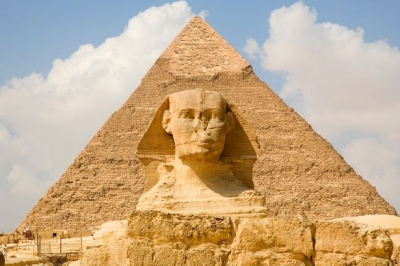
Also called yardangs, mud lions form in deserts where conditions are hot and dry. When winds full of sand blow forcefully in one direction against rock, the rock is abraded over a period of time, sometimes hundreds of years, into fantastic shapes. Yardang is Turkic for ‘steep bank’. In China, they are sometimes known as yadan from the Chinese transcription of the Uyghur form of the same name.
Soft rock such as limestone and sandstone lend themselves materials can also form mud lions.
Mud lions are often seen in clusters or in a long ridge. Though the name suggests an animal shape, a yardang can resemble a human figure or a building-like structure.
In Africa, especially in the Egyptian desert, there are numerous yardangs. A large concentration of mega-yardangs are found near the Tibesti Mountains in the central Sahara. In fact, some historians and geologists think that the Sphinx of Giza might have begun as a mud lion which inspired sculptors to carve it further into its present form! There is a famous yardang at Hole in the Rock in Papago Park in Phoenix, Arizona, a rock formation with a roughly circular hole in it. Another yardang in Arizona is Window Rock, near the town of Window Rock. It is a 60-metre sandstone hill with a very large circular hole in the middle of it. Some of the mud lions in the desert areas are so battered by wind that they have tunnels bored into them!
Picture Credit : Google
